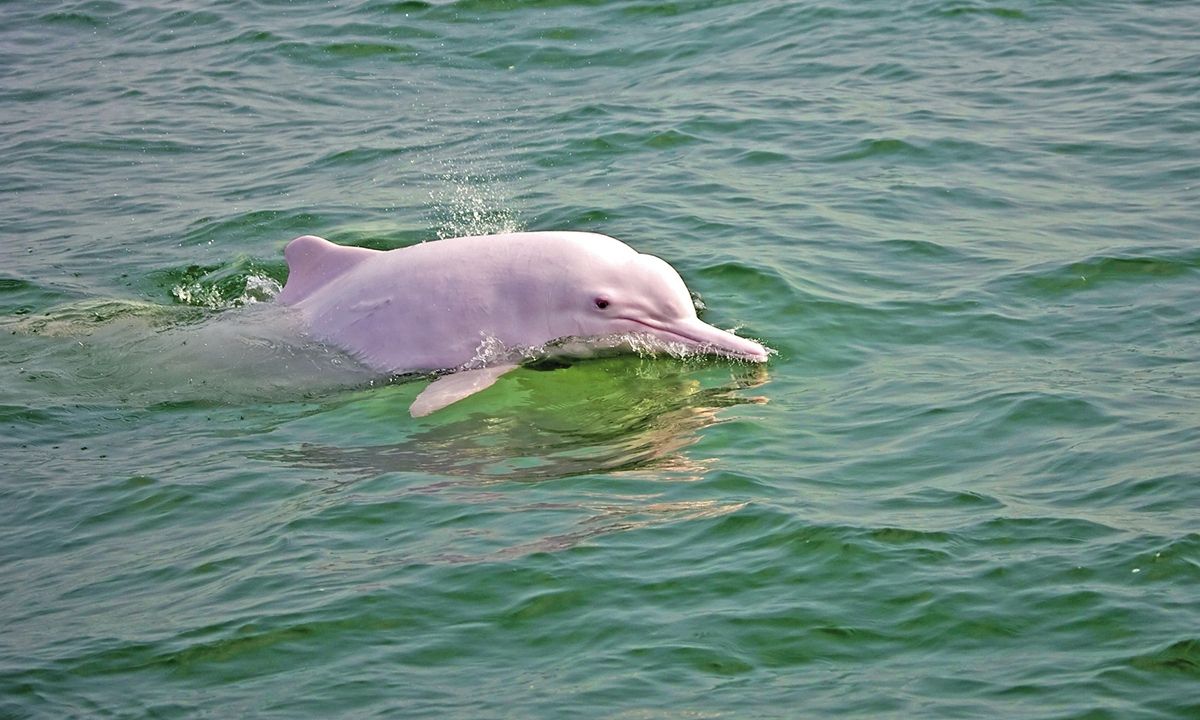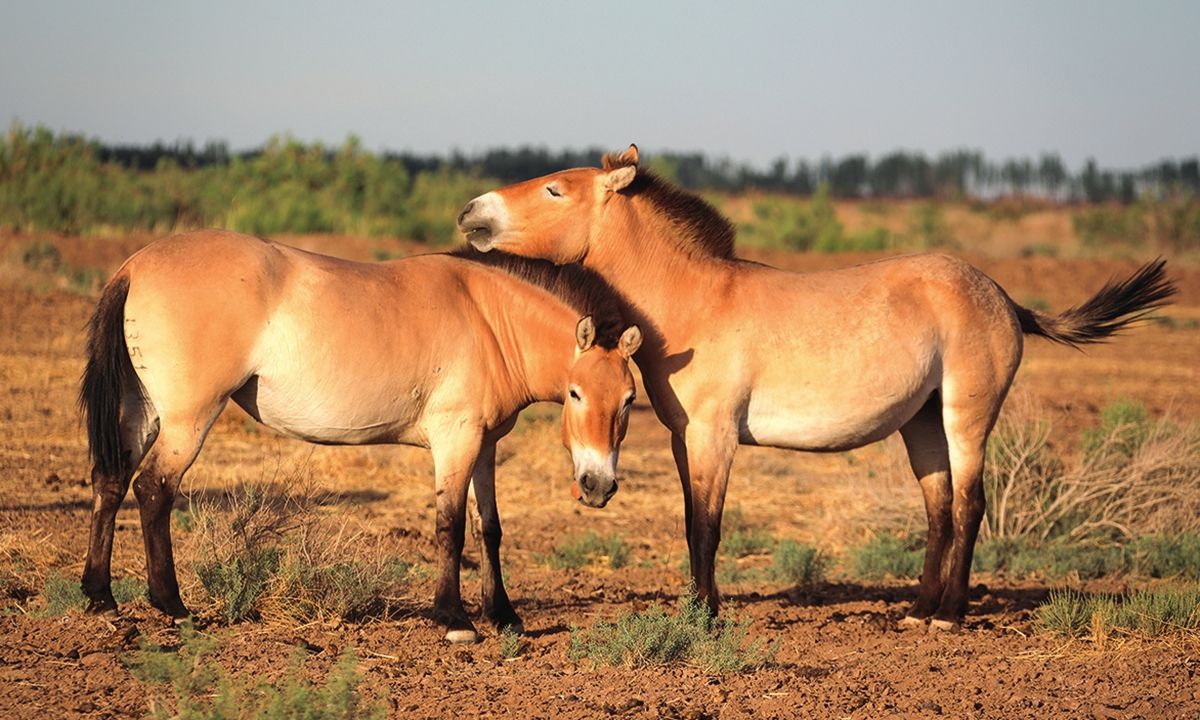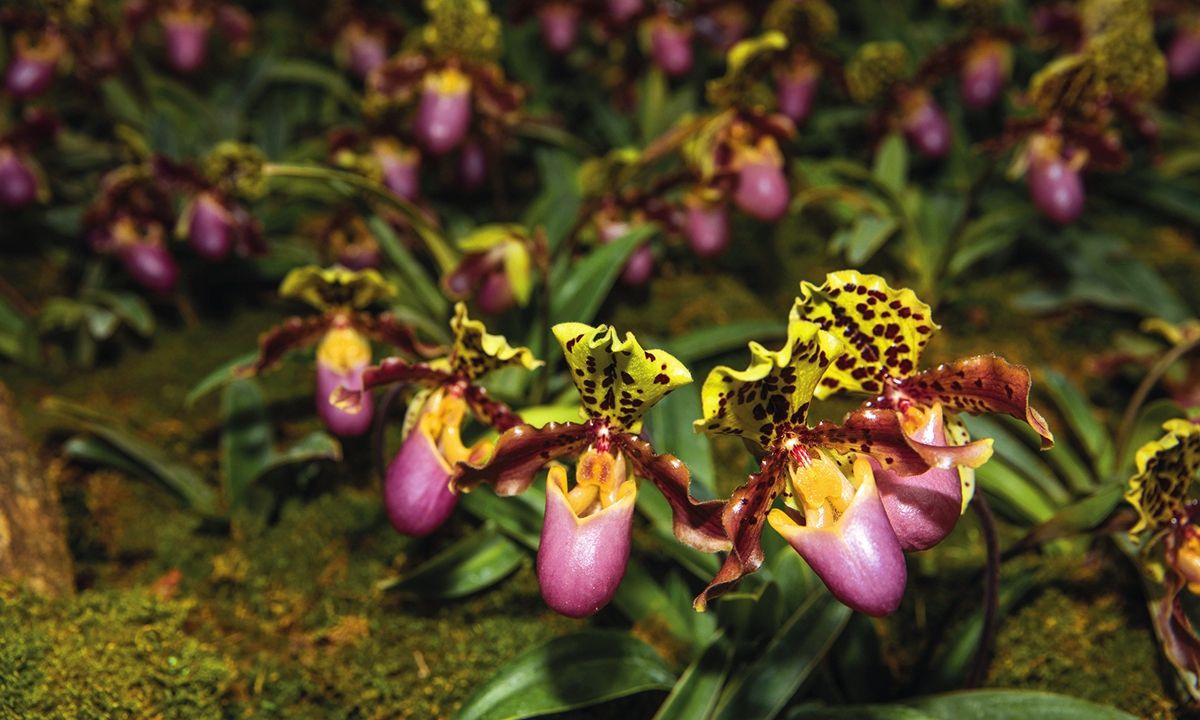
🐴 Recovery of rare species in China
China has been successful in protecting their environment and species during the past decades. Many species populations have been restored in the country, like for example the last wild horse population.
Share this story!
Around the world, a lot of animals as well as plant species are on the brink of extinction or already extinct. Many countries are working hard to save them and help them thrive. China is one of the countries with many stories of previously endangered animals and plants being restored. Giant pandas, Asian elephants and snow leopards are species many people know of, but China has also saved species less known to the public.
Chinese white dolphin

The rare Chinese white dolphin is under first class state protection and lives primarily in the Pearl River Estuary in southeastern China. When building the world’s longest sea crossing bridge - the Hong Kong-Zhuhai-Macao Bridge (HZMB) - the team took many efforts to not disturb or harm the dolphins.
In a recent exclusive interview with the Global Time, Meng Fanchao, chief designer of the bridge, said that the team constantly revised design schemes to minimize disturbance to the dolphins, such as shortening the construction period and cutting the number of piers that dolphins could collide with.
Another example of a measurement taken to ensure that the dolphins were not put at any unnecessary risk was that the team didn’t conduct any large-scale excavation work that could cause floating rubbish during the white dolphins peak breeding season. The construction workers were trained and educated to up their vigilance.
Przewalski's horse

Przewalski's horse was once extinct in China, due to excessive poaching and environmental degradation. However, China started reintroducing the rare species in 1985. The species is believed to be the last truly wild horse existing today, with a history of more than 60 million years. They imported horses from the UK, US and Germany. Back then they mainly raised them in Northwest China's Xinjiang Uygur Autonomous Region.
China returned the first group of Przewalski’s horses to Kalamaili Ungulate Nature Reserve in Xinjiang on August 28, 2001. According to Xinjiang Wild Horse Breeding and Research Center, the number of wild horses in the region had grown to 484 which include 274 horses in the wild, 113 horses in semi-captivity and 97 horses in captivity in 2020. The 274 horses In the Kalamaili reserve is population 10 times the number who lived there in 2001.
Yang Jianming, director of the Xinjiang Wild Horse Breeding and Research Center, told the Global Times that after more than 30 years of hard work, the Xinjiang Wild Horse Breeding and Research Center has successfully bred over 800 wild horses across six generations, making it the largest breeding base for Przewalski's horses in the world.
Paphiopedilum

An orchid species called Paphiopedilum malipoense also known as “the pandas of the plant world” have been successfully brought back from the brink of extinction. This happened after it became a sensation in the horticultural community after its discovery in 1970.
"People went crazy for its color, flower shape and fragrance, not just in China, but also in Europe. These collectors came to China and Southeast Asia for them, as they also had a long tradition of cultivating orchids. At the peak time in the 1980s, a paphiopedilum plant could sell for $8,000,” Zhang Shibao, a researcher from Kunming Institute of Botany under the Chinese Academy of Sciences told Global Times.
Zhang’s team are working on cultivation methods and artificial propagation which can protect the wild orchids. Now, the number of the paphiopedilum has increased from just a dozen to 10 000 thanks to careful conservation efforts.
The propagated plants will be moved back into nature where they can be a part of their natural ecosystem which consists of different fungi and pollinators to help bring back their existence in the wild.
You can find more stories like these ones in the Global Times article.
By becoming a premium supporter, you help in the creation and sharing of fact-based optimistic news all over the world.


